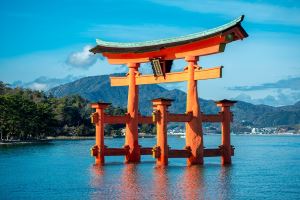
Japan is an archipelago of islands found off the Eastern side of Russia. The country places 18th in total land area in the world. Its largest island is called Honshu, second largest is Hokkaido, then Kyushu and Shikoku are runner-ups before the smallest of them all, the Ryukyu islands.
Hokkaido, which is the closest of Japan's islands to Russia, has a cool climate and snowy winters. The southernmost island, Kyushu, is much more prone to rainfall and warm summers.
Japan has a rich history of earthquakes and volcanic eruptions. Its most well-known volcano is Mount Fuji, which erupted last in 1707-1708. Over 60 of Japan's volcanoes are still active. Because of the threat of earthquakes, the Japanese have developed many quake-resistant building techniques.
Many animals live in the vast forest that covers two thirds of Japan. The pink-faced monkey is one of them. These creatures, also known as Japanese macaques, live as far as the northern tip of Honshu and macaques swim in hot springs amid cold mountain snow.
Experts believe that the first people to inhabit Japan were the Ainu. Though only a few thousand of their descendants live in Hokkaido today, Japan has the seventh largest population in the world overall. Most Japanese peoples' ancestors came from the mainland Asia to the islands nearby 2,200 years ago.
Today, most Japanese people live in busy cities and towns—the largest of which is Tokyo. Others include Yokohama and Osaka, which are on Honshu, where about 80 percent of the total Japanese population lives.
Japan makes up for its lack of resources with its immense wealth. Because of Japan's hilly terrain, only about 15 percent of the land is farmed. Japan produces almost 70 percent of its own food. This is an impressive figure in comparison to most other nations. The most common foods produced in Japan are rice, fruits, sugar beets, tea, and vegetables. Of these, rice is the most commonly eaten.
Japan's most valuable job is manufacturing. In fact, Japan ranks second behind the U.S. of the world's best manufacturing countries. Its goods, such as chemicals, electronics, and transportation equipment are shipped world-wide.
During the late 1800s, Japan became a powerful nation. In 1894, this nation won very important battles against China, and another against Russia in 1905. Japan attacked China in the late 1930s and later attacked the American Pearl Harbor in 1941. This final attack spurred the U.S. entry into the second World War.
Japan surrendered WWII in 1945 when the U.S. dropped their Nuclear Bombs on Hiroshima and Nagasaki. Afterwards, America occupied Japan for seven years. While America did so, Japan became a democratic country; the once powerful Emperor became a powerless head of state only able to participate in ceremonial duties.
Today, the Japanese elect a prime minister who leads what is now one of the most financially successful countries in the world. While it is one of the world's smaller countries, Japan definitely carries its own weight in knowledge and wealth.
[Source:
The Kingfisher Childrens Encyclopedia
]

